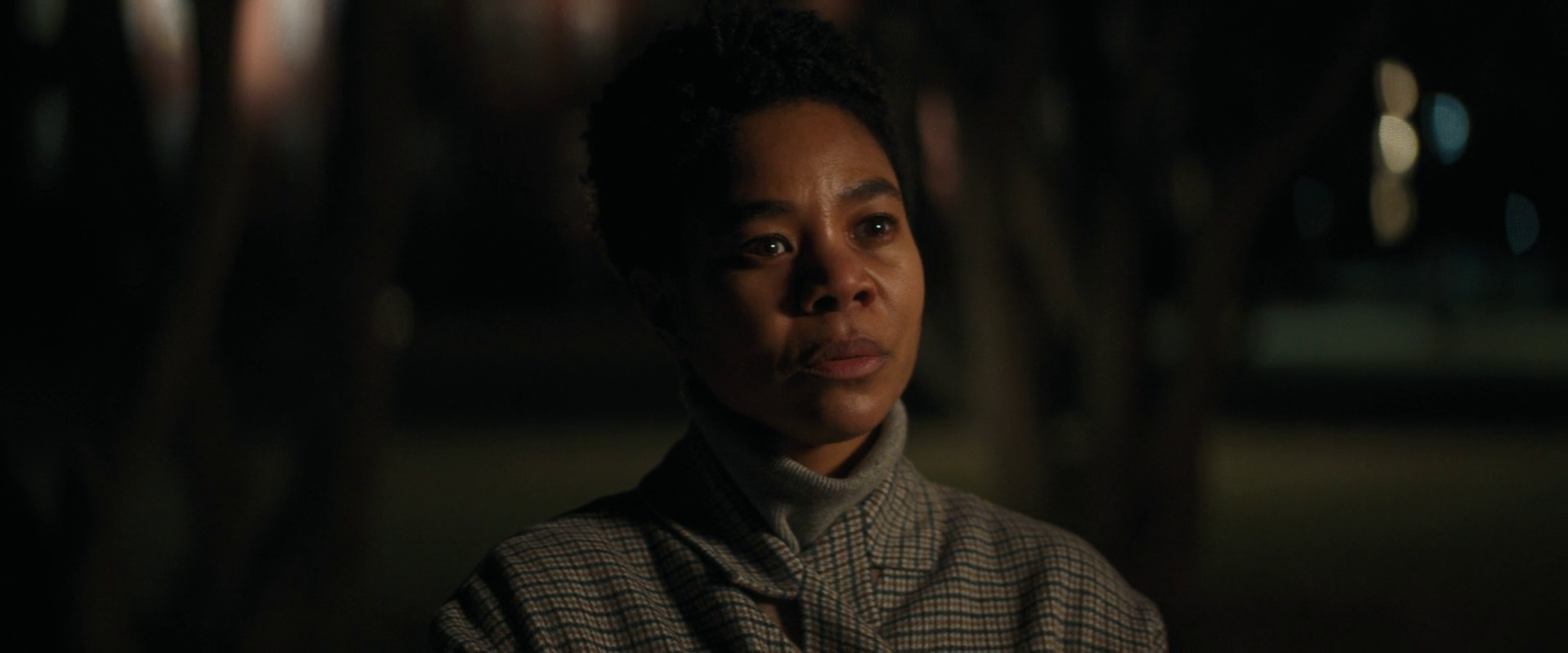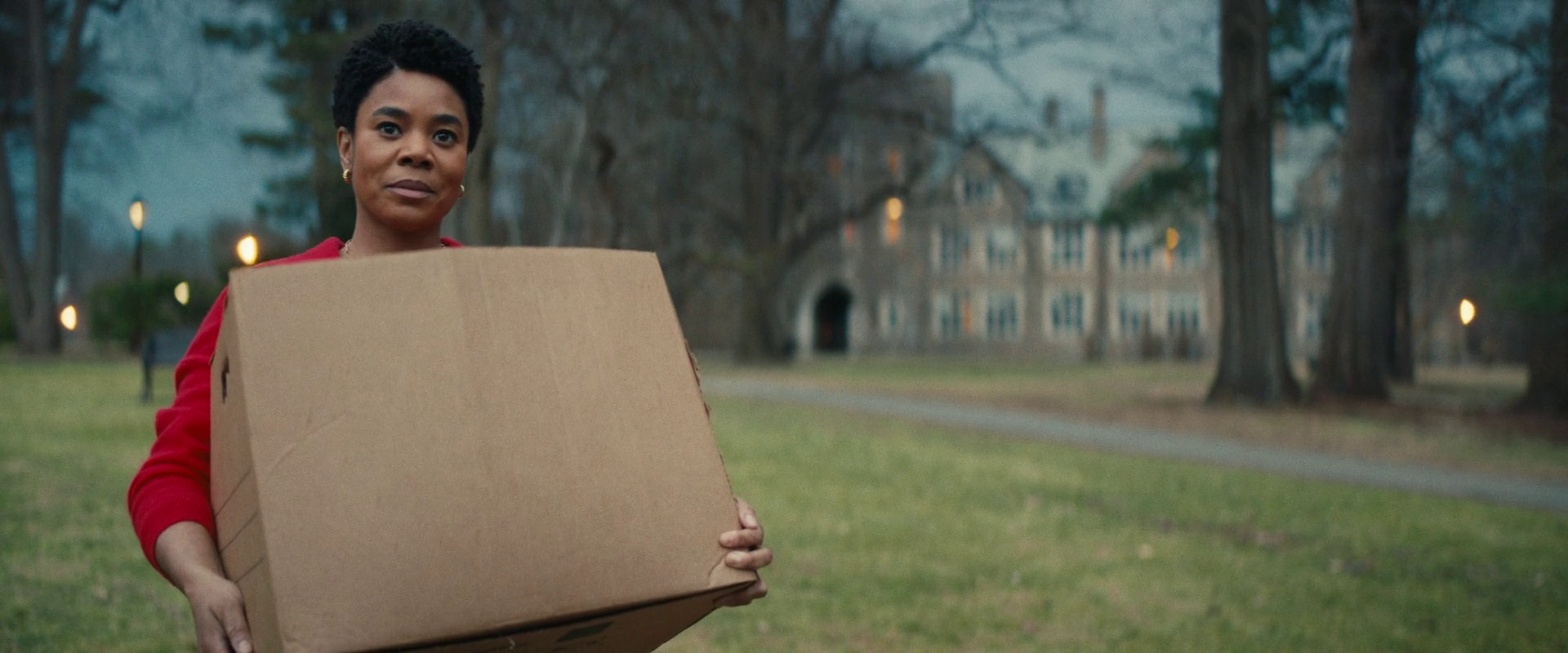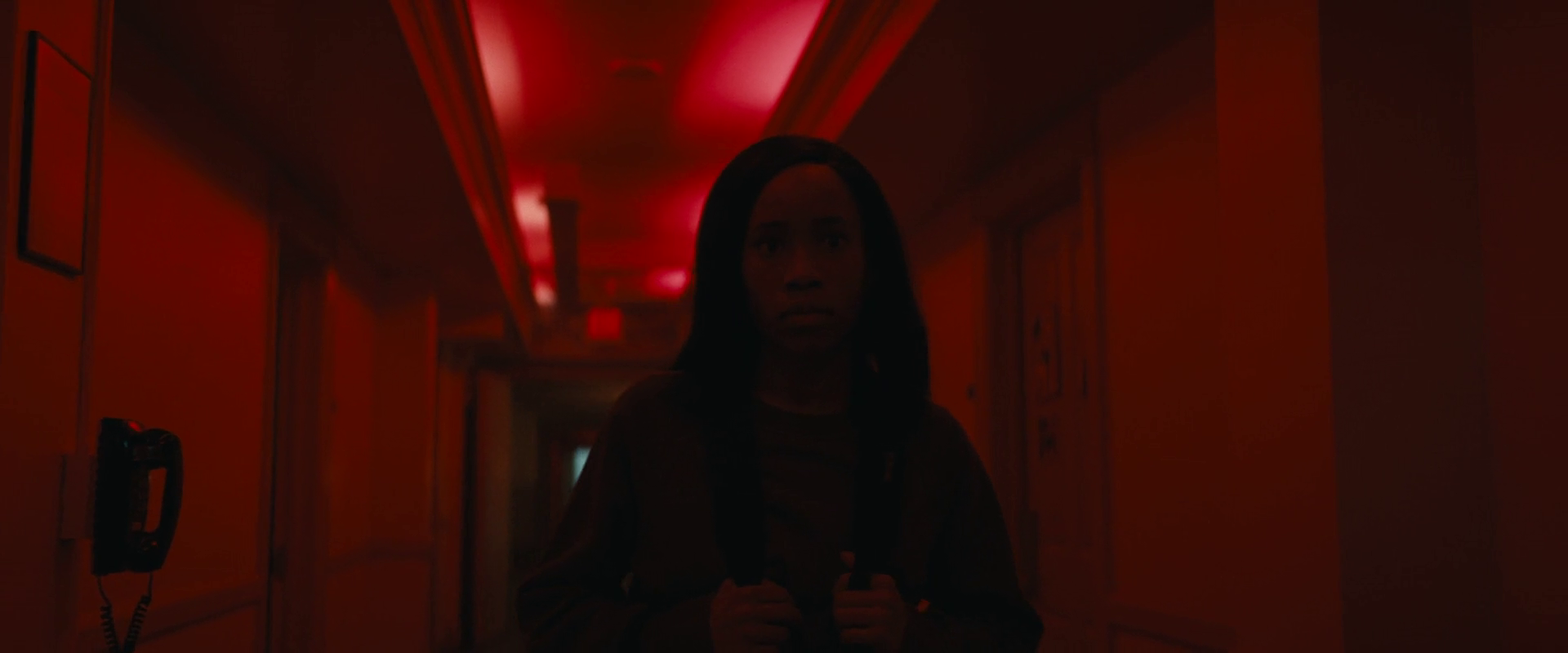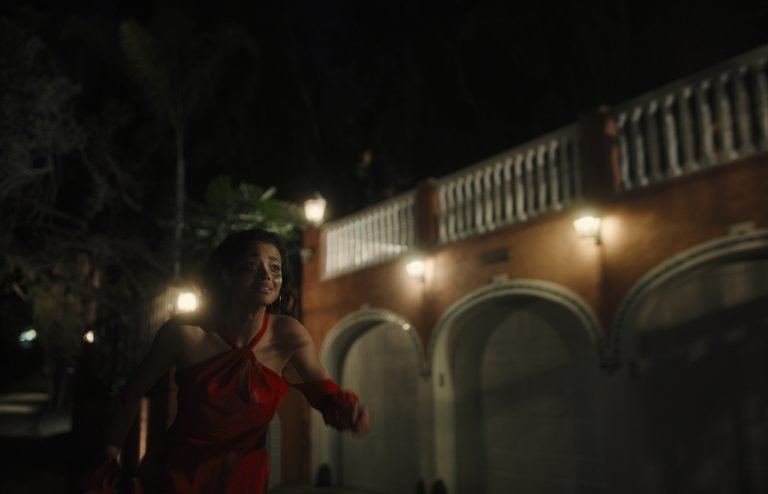Master (2022) Movie Ending Explained & Themes Analyzed: Mariam Diallo’s debut film “Master” is about microaggressions, caused due to deep-rooted institutional racism in academic circles in America, existing till the present day. “Master” feels very much like a personal movie in that regard because of the amount of smaller moments of presumptions and suspicions caused by subconscious behavior at being a non-black individual, which is far more dangerous and terrifying than actual blatant racism, and the movie painstakingly tries to recreate those moments.
The genre Diallo chooses as a delivery mechanism for this social commentary is an apt one because the horror genre has famously used fear of the unknown and fear of the unthinkable among humans to bring about social impacts, either subtly or bluntly. But whether it manages to succeed in delivering a social message while simultaneously being a visceral horror movie is up for debate.
There are tons of little moments, of microaggressions working in tandem, where a culmination of it produces the experience enacted in Master. Needless to say, Spoilers follow.
Master (2022) Movie Synopsis & Summary:
Master follows the experiences of two black women in Ancaster, a predominantly white elite university in New England. Gail bishop (Regina Hall) is the new “Master”, the first Black Master of the university, an initiative was taken by the university to promote diversification to uphold the mark of prestige and stop the implicit bias of discrimination. In that regard even Gail takes her promotion to the post seriously, making an effort to bring about change.
On the other end is Jasmine Moore, a freshman who gets assigned to Room 302 along with her white roommate Amelia. The focus on the adjective of race here is important which would be revealed as the movie progresses. The USP of Room 302, if you can call it that, is it was also occupied by a black student in 1965 named Louisa Weeks, who later took her life by hanging.
Jasmine unbeknownst to such information currently, makes friends with Amelia and her posse of friends, even as they make concerted efforts to ensure she pays for the full ordered pizza and clean the spilled drinks. This is the first in a series of microaggressions that begin to cumulatively take effect the longer Jasmine starts to interact with the school and its surroundings.
A black server in the mess hall is cordial and genial in her greetings to the rest of the student populace but immediately starts sulking upon seeing her. Images of paintings of the masters at the school are shown to be mutilated, only in the next scene to look completely normal as Jasmine looks on, reeling from these hallucinations. One night in her room, Amelia’s friend Tyler finally tells the folklore of the haunted room.
There are also moments where director Diallo captures the horror by abstaining from jump scares. Jasmine’s tendency to sleepwalk results in us seeing her suffering from “night terrors”, as a bony hand reached out from under her bed and scratches her hand and the back of her neck. Waking up in a sweat, she tries to dismiss it as a dream but soon realizes that the scratches on her hand and neck are real. She however doesn’t confide about these events to anyone, because there is no one for her to confide to, and her existing friendship with Amelia gets broken when Jasmine starts making out with Tyler, Amelia’s boyfriend.
Elsewhere Jasmine gets into a heated argument with Liv Beckman, who gives her an F for her analysis of The Scarlet Letter, or more precisely her lack of understanding of the racial subtext in The Scarlet Letter. It might have been designed a fair assessment for Jasmine, but Jasmine’s friend had cooked up a far trivial explanation and had attained a score of B+. This form of distinctive injustice angers Jasmine who goes to Gail to inform her of her decision to file a dispute against Beckman.
Gail wants to be on her side and help Jasmine relive her plight, as she has been in the same boat. Gail reveals to Jasmine that there were only three black students during her time at Ancaster, not a huge distinction from the present when it is revealed there are only 8 students in the current student body of Ancaster. Incremental diversification almost translates to tokenism. The tokenism feels far more pronounced in Gail’s interaction with her fellow faculty members, who value her presence only based on her color of skin, which is evident through their interactions.
The Folklore of Margaret Billet and the folklore of Room 302:
Jasmine through her research as well as the mythology surrounding the school learns about the curse on the school. A woman named Margaret Billet was hanged on December 3rd, 1694 due to being accused of witchcraft. According to folklore, every December 3rd, at precisely 3:33 pm, Margaret Billet would choose a freshman every year and kill them. And according to history, every December 3rd a student used to commit suicide.
In the year 1965, the first student of colour at Ancaster was a woman named Louisa Weeks, staying at Room 302, at the Belville House Dormitory. As Jasmine researches, she realizes that she shares a striking resemblance with Louisa Weeks in terms of their academic career and personal life. Both of them had a strong grasp on academics, while being outcasts, not in touch with their family, and prone to hearing strange noises outside her door.
Related to Master (2022) Movie Explained – Windfall (2022) Movie Explained: Ending and Themes Analyzed
Why did Jasmine die?
Jasmine slowly becomes more paranoid and withdrawn as a presence, which she strongly believes to be a racist student, plants a noose at her door with the words “LEAVE” carved across the door. In another harrowing sequence, we see a cross being burnt in front of her as she escapes herself from a nightmarish hallucination where she sees tourists looking at the bodies of two black women as they are sleeping while a noose is hung around their necks by a bony hand.
The resultant hallucination, along with a cross being burnt both in front of her and Gail, causes her life to spiral. As she slowly starts connecting the dots, having acquired information from Louisa’s diary and seeing a hooded specter, she realizes Margaret’s specter haunting her. She rushes back to her room, locks her door, but at exactly 3:33 pm she hears knocking at her window. Climbing out from her window to the roof, she loses her balance but survives the fall. However, it can be inferred that enough of these hallucinations and accidents causes her mind to break, due to which the next time Gail goes to check up on Jasmine, she finds her hanging from the ceiling.
The case of Liv Beckman’s Identity
As mentioned previously, Liv Beckman is a literature faculty professor of mixed racial descent, who is also very close with Gail. However, the conflict arises when Jasmine files a dispute against her on being awarded an “F” on her essay by her regarding her analysis on The Scarlet Letter.
This causes the other faculty member on reevaluating the decision on awarding Liv tenure – the official decision being lack of substantive publications. Taking advantage of Jasmine’s alienation and subsequent suicide, Liv leverages that information to force the institute to grant her tenure, as prior history of racial abuse in the institution is enough to cause caution for the college authorities.
By giving an F to Jasmine, Liv wanted to prove that skin color did not come into consideration when she was handing out grades. In that regard, Liv turns out to be a very savvy individual. Her savviness is given an added boost with a stark revelation when Gail finally meets with Liv’s mother, Esther.
Esther had been trying to contact Gail since the beginning of the movie and it could be inferred that Jasmine mistook Esther for the hooded specter of Margaret Billet. Esther drops a bombshell on Gail by revealing to her that Liv was a white woman and some “evil force” had transformed her into black. But as Gail impassionately asks her, Liv reveals that she was born off an interracial marriage, and her mother did not want anyone to know about it. It also helped that she got a chance to work at Ancaster, and thus did not want to leave her home.
Related to Master (2022) Movie Ending Explained – Deep Water Movie Explained: Ending & Themes Analyzed
Master (2022) Movie Ending Explained:
The ending sequence is what the movie had been building towards, a cumulative epiphany of sorts for Gail. With the worm infestation in the beginning, to her failure of preventing Jasmine from committing suicide to the privilege enjoyed by the predominantly white faculty, and finally Liv being granted tenure – all of it reaches a boiling point.
The propensity of the faculty members to give more importance to Liv’s evaluation than to investigate the death of a student is an appalling example of their privilege, further compounded by the attitude of these issues as very much “a Gail problem”. Her horror in realizing that nothing has changed and she essentially was a maid in the guise of the “Master”, causing her to resign at the end of the movie.
Master (2022) Movie Themes Explained:

Deep-rooted racism in contemporary America:
The more heart-wrenching moments are the moments shared by Jasmine. Those are the moments that feel more personal, because the micro-aggressions she faces by her peers, almost unknowingly for a majority of the time, are enough to cause her alienation.
It is exacerbated by the folkloric mythology of Margaret Billet, which feels inspired by the Salem Witch Trials and also speaks of much raw and primal deep-rooted racism which has only evolved in its festering to becoming a part of the constitution and bedrock of the institution.
The hallucinations and horror experienced by both Jasmine and Gail could be supernatural, the racially charged history and the festering bedrock of the institution rejecting them by affecting their mental landscape. Or it could simply be compounded by alienation, for Jasmine more overtly by ignoring her or staring at her, and for Gail by simply acknowledging her only from a surface level.
Liv Beckmann’s identity crisis as shown to the audience and later tackled via the official reasoning of giving her tenure shows a woman savvy enough in knowing when to play the race card to serve her ends. From that point of view, Liv is less of a villain and more of a survivor. It could be extrapolated from her childhood, which could not have been an easy one, and thus assimilation into the privileged society was the only way out for her and she took it. In a way, she is the version of Gail that Gail herself rejects upon the final realization.
In the final scene, it slowly dawns on Gail that history has only been recreated. The striking similarity between the people in the photos and the people playing cards on the table is the symbolic straw that breaks the camel’s back. The same generations of people are running the events behind the scenes. Diversification is distinct only as a form of appearance and tokenization. And as Gail realizes in horror, her being appointed as “Master” is essentially her being the token maid to the white folk, responsible for cleaning up the mess. It’s almost like a “house negro”. It’s that moment of realization of inaction by Gail against the cyclical form of institutional racism that causes her to resign.












